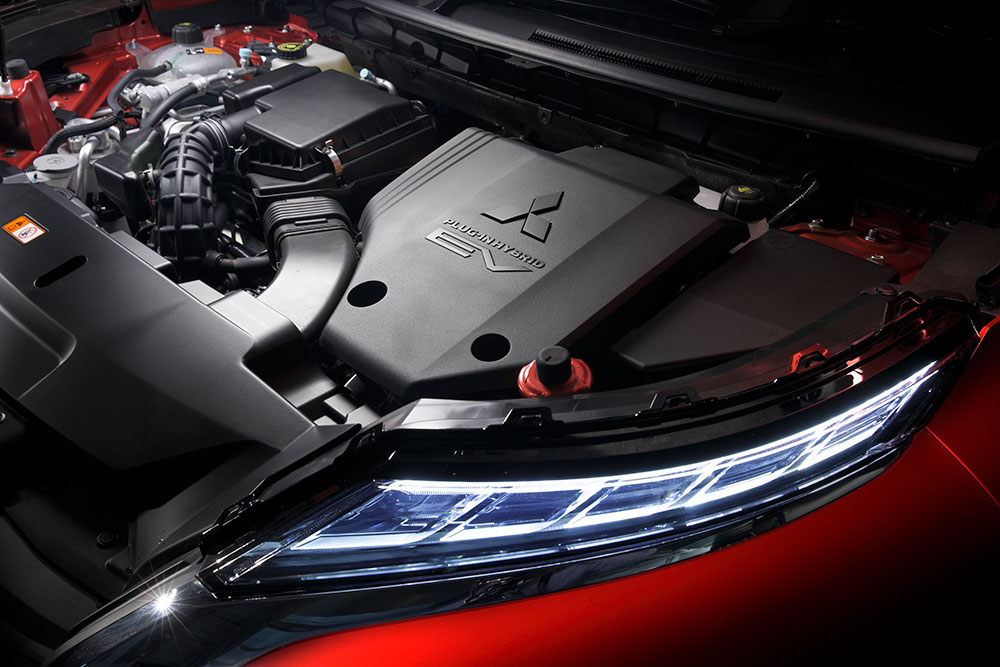How to maintain an electric car
Maintaining an electric vehicle (EV) is not all that different to caring for one powered by an internal combustion engine (ICE).

While there are some major differences between electric and ICE vehicles, they actually have much more in common than they do setting them apart.
The largest difference between the two is that an EV utilises battery packs and electric motors, either solely or in tandem with an ICE, depending on the type of EV.
EV owners should refer to their ‘owner’s manual’ for advice on owner care procedures and the service book for scheduled service information.
Maintaining the battery
Lithium-ion is the most common style of battery used in EVs, similar to what is found in modern mobile phones and laptops.
Much like its application in these devices, the batteries in EVs are not serviceable, meaning repurposing or recycling them is often the most economic option.
Owners should refer to their manual for guidance on correct charging procedures to maximise battery life.
Charging your EV for maximum battery life
The lithium-ion batteries used in EVs deteriorate at the extremes of charge state and are happiest somewhere in the middle – between about 30–80% of their capacity.
By nature, lithium-ion batteries have a finite amount of charge/discharge cycles, however making sure not to stress the battery unnecessarily will ensure a long life.
Owners should read the owners' manual follow the manufacturer's advice on the best charging practice to maintain battery life.
Keeping your EV’s battery at optimum temperature
Much like extremes of charging capacity, lithium-ion batteries can be weakened by extreme temperatures.
The hottest an EV’s battery gets is during rapid charging and discharging.
Some, but not all, EVs use liquid cooling to keep batteries at their optimum temperature during these conditions.
Just like in conventional ICE vehicles, this coolant degrades over time, reducing its ability to transfer heat and keep components cool.
If your EV is lliquid-cooled, ensure this fluid is changed as part of routine maintenance.
Avoiding heavy, constant acceleration (to limit discharge) and using lower kW output chargers where possible (to limit charge) will also help keep batteries happy.
Parking your EV in the shade or under cover when possible can also save the battery from heating up under Queensland’s sun.
What else should I do?
When the electric motor and battery are taken out of the equation, an electric and ICE vehicle are almost identical and their servicing should be approached in the same way.
Both types of car use suspension, steering and braking components, tyres, fluids, wiper blades and even a normal 12-volt lead-acid battery. All wear out over time and need replacing.
Maintaining the correct tyre pressure as specified in your owner's manual will also improve range.
RACQ will help with Roadside Assistance in the event of a breakdown all year round, including roadside recharging.
If you are not high-voltage certified don’t never attempt to service any part of the high-voltage system on an EV.
How much do services cost?
Car makers generally advise battery electric vehicles (BEVs) should follow an annual service schedule (or every 15,000km) to ensure they are safe to operate and to maintain factory warranty.
This annual routine inspection of all components (such as brakes, suspension and steering, airconditioning, lights and wipers, battery terminals, instrument warning lights and gauges, safety systems, tyres, a diagnostic system check, recall check and lubing of hinges) could cost between $200–$400 depending on the manufacturer or service centre.
Given that BEVs use fewer moving parts than ICE vehicles, plug-in hybrid and hybrid vehicles – and don't require as many fluids in their operation (such as engine oil) – costs of these consumables are subtracted from your servicing bill as they no longer need to be replaced.
Unlike ICE vehicles which require major servicing for their engine at predetermined mileage, each service interval for an EV will have the same parts checked over, so servicing costs are likely to be stable over the lifetime of the vehicle.
The only possible exception for an EV being an issue arising with its battery pack.
How much will a new EV battery cost?
EV batteries are by far the most expensive component in the vehicles, but they are designed to last much longer than standard batteries in conventional vehicles.
Most manufacturers offer eight or 10-year or 160,000km warranties, exceeding the typical mechanical warranty on ICE cars.
If an EV battery fails outside of warranty, it could be very expensive to replace.
There are many variables, from battery size to labour charges, so contact the manufacturer to get an exact quote.
As the EV market grows, improving battery technology and economies of scale should see battery prices fall.
Article written and supplied by the NRMA
RACQ's vision for Australia's EV strategy
Related topics
Things to note
The information in this article has been prepared for general information purposes only and is not intended as legal advice or specific advice to any particular person. Any advice contained in the document is general advice, not intended as legal advice or professional advice and does not take into account any person’s particular circumstances. Before acting on anything based on this advice you should consider its appropriateness to you, having regard to your objectives and needs.
Insurance Products (excluding Travel Insurance) are issued by RACQ Insurance Limited ABN 50 009 704 152 (RACQI) and arranged by its agent, RACQ Distribution Services Pty Ltd (RDS) ABN 35 116 361 650, AFSL 567130 and RDS' authorised representatives (including RACQ Operations Pty Ltd ABN 80 009 663 414, AR No. 234978 (RACQO). Conditions, limits and exclusions apply. RDS and RACQO are in the RACQ group of companies. One of the companies in the RACQ group of companies has a minority shareholding in RACQI.
RDS and RACQO have not taken your personal objectives, circumstances or needs into account when preparing advice regarding insurance products and you will need to consider whether the advice is appropriate for you. Read the Product Disclosure Statement (PDS) and any applicable Supplementary PDS before making a purchase decision on this product. You can also access our Target Market Determinations on this website. RDS receives a commission from RACQI for the policies it arranges. RACQO receives fees paid for services it provides to RDS. Further details about remuneration are available on request prior to purchasing.
Banking and loan products issued by Members Banking Group Limited ABN 83 087 651 054 AFSL/Australian credit licence 241195 trading as RACQ Bank. Terms, conditions, fees, charges and lending policies apply. This is general advice only and may not be right for you. This information does not take your personal objectives, circumstances or needs into account. Read the disclosure documents for your selected product or service, including the Financial Services Guide and the Terms and Conditions, and consider if appropriate for you before deciding.
Except for RACQ Bank, any RACQ entity referred to on this page is not an authorised deposit-taking institution for the purposes of the Banking Act 1959 (Cth). That entity’s obligations do not represent deposits or other liabilities of RACQ Bank. RACQ Bank does not guarantee or otherwise provide assurance in respect of the obligations of that entity, unless noted otherwise.
RACQ Bank subscribes to the Customer Owned Banking Code of Practice which establishes higher standards than the law requires. The Code reflects modern consumer expectations and developments in approaches to issues such as consumer vulnerability, guarantors, and supporting customers through financial hardship. Please read our Customer Owned Banking Code of Practice page for more information.
RACQ Operations Pty Ltd (ABN 80 009 663 414 AR 000234978) and Members Travel Group Pty Ltd (ABN 45 144 538 803 AR 000432492) are acting as an Authorised Representative of the issuer of the insurance, Tokio Marine & Nichido Fire Insurance Co., Ltd. (ABN 80 000 438 291 AFSL 246 548). Any advice set out above is general in nature only, and does not take into account your objectives, financial situation or needs. Before purchasing any travel products, please consider the RACQ Travel Insurance Product Disclosure Statement (PDS) and the Target Market Determinations (TMDs) that apply to these products. Whilst the PDS outlines the Terms and Conditions of these products, the TMDs outline the intended class of customers that comprise the target market for these travel products. This will allow you to consider which products best suit your objectives, financial situation and needs and consider the products appropriateness to your personal circumstances. TMDs also outline matters involving the distribution and the review of these products. The PDS, Supplementary PDS and TMDs for each travel product can be found here.

